This video was originally released by SouthFront on June 21, 2019
Introduction
Armed forces organization depends on several factors, from current and future threats and challenges (the nature of the projected theater of operations, or TO), to the country’s economic and technological capabilities. The doctrines of the two world superpowers of the second half of the 20th century (USSR and USA) assumed that large combined arms forces would conduct operations with massive support by artillery and aviation under conditions of nuclear war, in a multi-theater setting, including the wide-ranging European TO. But the experience of actual wars, including the Vietnam one for the US and Afghan one for the USSR showed that the current limited local and regional conflicts are decided by well-equipped mobile formations. Both countries researched the optimum organizational structure and methods of waging war for such operations.
Another event determining the development of military thought was the break-up of USSR. Massed nuclear strikes were no longer on the agenda. Military planning shifted from operations by field armies and larger formations toward highly mobile and well-equipped tactical task forces and combat teams up to brigade level.
By the end of the 2000’s, leading powers again changed their assessment of threats and challenges. This was due to the changes in global economy as well as social and ideological processes. Neither the US nor Russia were satisfied with the world situation. One felt the sense of losing an opportunity to establish oneself as the global hegemon, while the other sought to re-establish the status of a, at minimum, regional power. Economic motives played a key role in both cases. The powers increasingly acted through military confrontations. The risk of a global or a number of regional conflicts increased. Armed forces required adaptation to the new reality.
This is the context in which we briefly evaluate the organizational and staff structure of US and Russian armies, their missions and tasks, and development prospects.
United States
From the perspective of US military and political leadership, the post-USSR international environment and the associated changes in the methods of warfare demanded high-readiness Army units. Army divisions of the late 1990s represented a collection of battalions and brigade HQs. The divisional commander formed brigade out of several battalions and an already deployed brigade HQ. This made it difficult to coalesce these ad-hoc brigades, undermined their ability to conduct autonomous operations, and complicated joint action among brigade’s subunits. The decreased mobility and lavish equipment levels made it difficult to deploy divisions to overseas theaters of operations. Such units did not correspond to contemporary rapid reaction requirements, or the need for units capable of operating effectively in combat and non-combat (“operations other than war”) roles. The new requirements toward the US Army, particularly relevant during the opening phases of operations, demanded reforms in order to create a qualitatively new formation type capable of rapid deployment to theaters of operations.
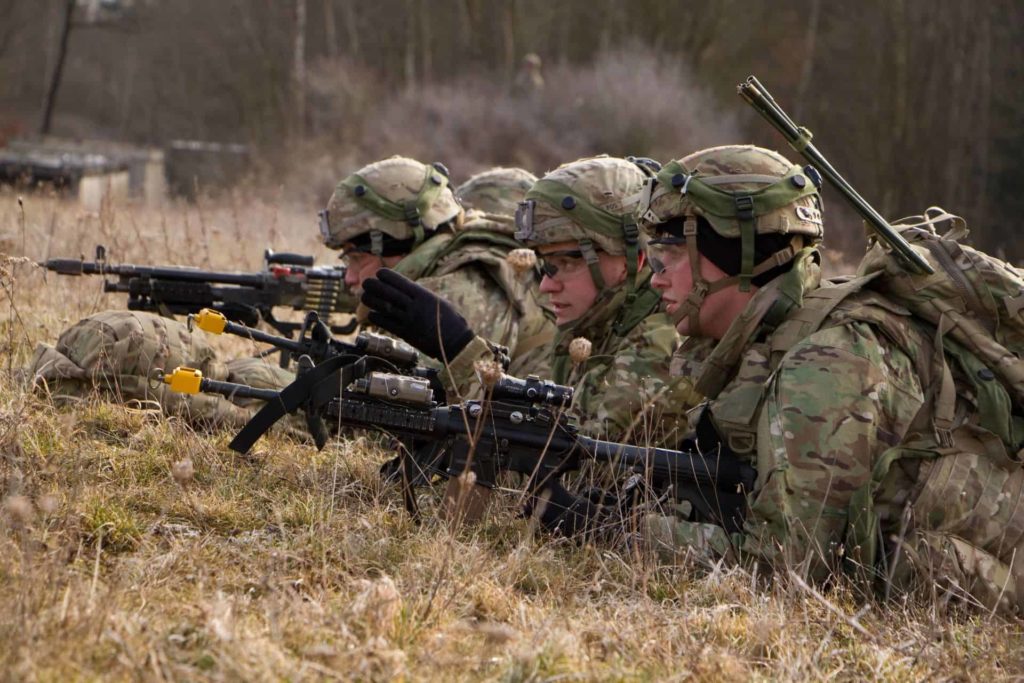
Soldiers in Bull Troop, 1st Squadron, 2d Cavalry Regiment conduct a blank fire lane during troop exercise evaluations in the Grafenwoehr Training Area Feb. 18, 2018. The U.S. Army Combat Readiness Center is modernizing the Army Safety program to ensure that all Soldiers are safe during training and in carrying out their duties. (Photo Credit: U.S. Army photo by Staff Sgt. Jennifer Bunn)
The US Army launched a large-scale re-organization in 2003 in order to transition to a brigade structure. Results included new corps and divisional command structures with a novel organizational structure.
As far as divisions are concerned, they are currently modular. The division maintains the function of HQ over a number of wholly autonomous brigades. Brigade Combat Teams (BCTs) may be sent at any moment and in desired quantity to any corner of the world under the command of a divisional HQ or theater-level command structures. US Army divisions may be divided into two types—combined arms (infantry, cavalry, armored) and special (mountain, airborne, airmobile). Overall there are 11 divisions, not counting the US Army National Guard.
Brigades, consisting of a number of assets, became the key building blocks of land forces. They were subordinated to divisional, corps, or theater HQs, acting as a component of joint forces formed to satisfy the needs of the local commander. Such brigades are capable of rapid deployment and timely reaction to changes in situation.
Organizational and staff structure of Brigade Combat Teams
The US Army includes 3 brigade types: the Infantry Brigade Combat Team (IBCT), Stryker Brigade Combat Team (SBCT), and Armored Brigade Combat Team (ABCT).
The mission of the IBCT is to disrupt or destroy enemy military forces, control land areas including populations and resources and be prepared to conduct combat operations to protect US national interests. It is intended for operations in urban or densely populated areas where heavier equipment is inappropriate, as part of aerial or amphibious assault operations, and as a enveloping/raiding force. IBCT consists of 7 battalions: 3 infantry, reconnaissance, combat service support, combat engineer, and artillery, and totals 4413 soldiers. Each IBCT can perform assault operations and is officially designed as assault-landing. Most of its soldiers are mounted on Humvees. The weight and size of IBCT equipment allow transport using all types of transport aircraft, ensuring very high strategic mobility. IBCT’s main firepower consists of 6 towed M777 155mm howitzers, 12 towed M119 105mm howitzers, 48 mortars of various calibers, 36 self-propelled TOW-2 ATGMs, and 100 portable Javelin ATGMs.
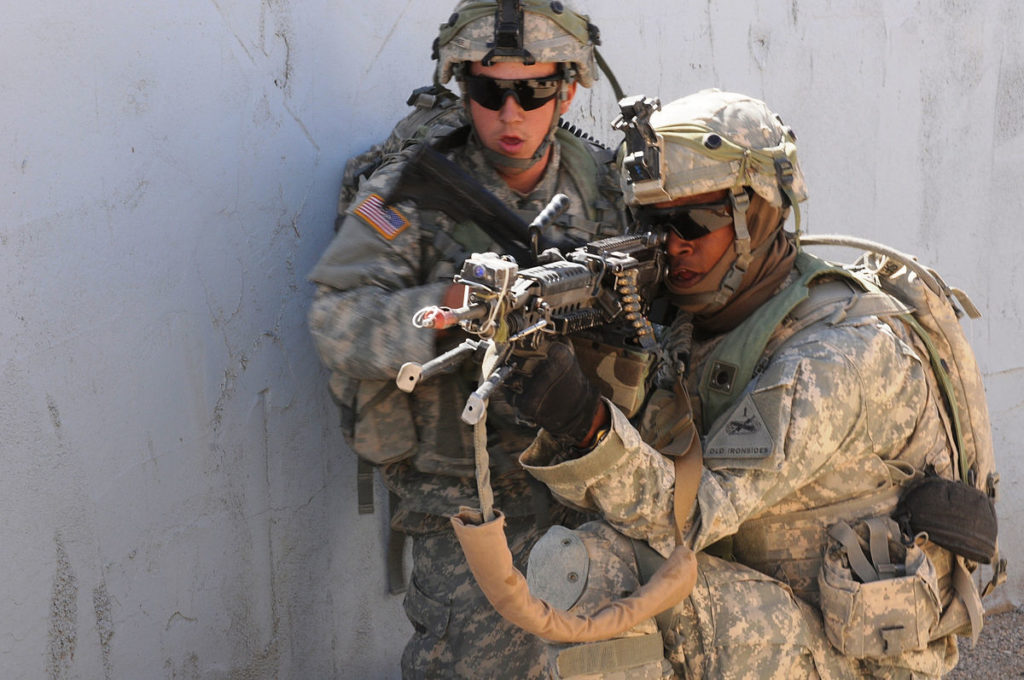
U.S. Army soldiers of 141st Infantry Battalion, 3rd Infantry Brigade Combat Team, 1st Armored Division, Bulldogs, out of Fort Bliss, fire at the enemy as part of a training mission at the National Training Center, Fort Irwin, Calif., on June 19, 2011.
Organizational and staff structure of SBCT
The SBCT is a medium mechanized brigade intended for both offensive and defensive operations in various terrain types. This BCT is usually used in fluid maneuver environments in certain terrain types (urban, mountain), and to defend important sectors.
SBCT consists of 7 battalions: 3 infantry, reconnaissance, combat service support, combat engineer, artillery, and totals 4500 soldiers. Since 2015 the anti-tank battery was transferred from combat engineer to reconnaissance battalion in order to form a fire support company there.
SBCT firepower includes 77 M1138 wheeled assault guns/tank destroyers with 105mm cannon, 36 M1129 SP 120mm mortars, 9 M1134 SP TOW-2 ATGMs, 121 portable Javelin ATGMs, and 18 M777 towed 155mm howitzers.
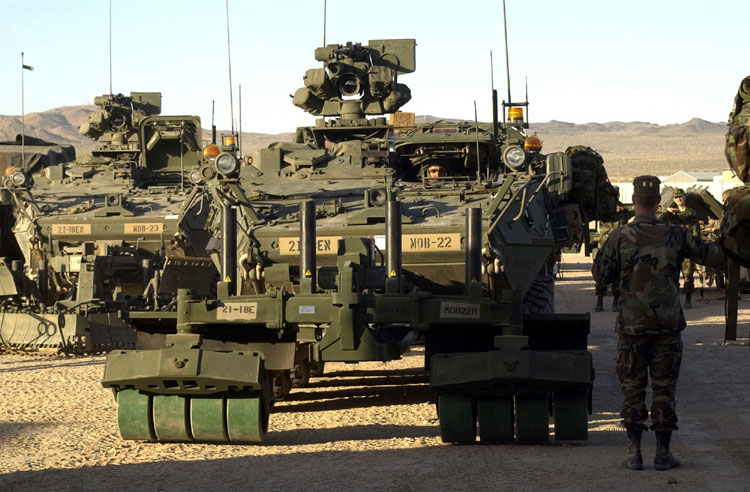
Soldiers from the 18th Engineer Co. 3rd Brigade, 2nd Infantry Division, Stryker Brigade Combat Team, ready their 19 ton Engineer Squad Vehicles prior to moving into the “box” at the National Training Center.
Organizational and staff structure of ABCT
The ABCT represents the mainstay of US Army heavy forces. It is the main tactical shock-action unit intended for operations in tank-friendly terrain, launching counterattacks, breaking enemy defenses, and inflicting maximum damage on the enemy. Possessing great striking power and survivability, ABCTs form the core of the land force component in strategic theaters and, as a rule, are deployed in their entirety on combat missions.
ABCT consists of 7 battalions: 3 mechanized (combined arms), reconnaissance, artillery, combat engineer, and combat service support, totaling 4743 soldiers. Since 2013, the three combined arms battalions became two tank (two tank and one mechanized company) and one mechanized (one tank, two mechanized companies). It meant the elimination of two mechanized companies, while a tank company was reassigned to the reconnaissance battalion.
ABCT firepower consists of 87 Abrams MBTs, 18 M109 155 SP howitzers, 18 120mm SP mortars, and 84 portable Javelin ATGMs.
Support Brigades
Modularity is also practiced in support brigades. The Modular Support Brigades come in 5 varieties: army aviation, artillery, reconnaissance, mixed (combat engineers, signals, military police, NBC defense), and supply. In earlier times artillery and combat service support existed only at division level, while brigades were assigned subunits by the divisional commander depending on the mission and situation. BCTs may be supported by the following units, depending on the mission and higher commander’s decisions.
Combat Aviation Brigades include UAVs, heavy and medium transport helicopters (Chinook and Blackhawk), attack helicopters (Apache), medevac helicopters. Such brigades are directly subordinated to divisional HQ.
Field Artillery Brigades (Fires Brigades until 2014) are equipped with M270 MLRS and HIMARS multiple rocket launchers. They also conduct information operations and have non-lethal capabilities.
Air Defense Brigades possess Patriot and THAAD anti-air and anti-missile batteries. They were taken away from divisions as part of air defense reorganization. Nine out of ten US Army air defense battalions and two out of eight National Guard air defense battalions have been deactivated. The US Army has realized the need to re-establish a viable short-range air defense (SHORAD) capability, largely from lessons learned in Ukraine and Syria. National Guard units still utilize the Avenger AN/TWQ-1 short-range air defense system, and the US Army is currently updating and deploying the Avenger. The 678th Air Defense Artillery Brigade, a National Guard unit, was deployed to Europe last year, the first such deployment since the end of the Cold War.
Maneuver Enhancement Brigades are used on those operational theaters where combat and support units are used in limited quantities, where an entire support brigade would be superfluous.
Sustainment Brigades provide logistical support of units above brigade-level. They consist of two battalions: special troops (battalion HQ and signals company), and combat service support (battalion HQ, technical servicing company, transport company, dispatcher group, quartermaster company).
Battlefield Surveillance Brigades are equipped with UAVs and deploy surveillance detachments.
In addition, there also exist Security Force Assistance Brigades, which train allied armed forces. While such brigades do not directly participate in combat, 500 SFAB troops save 4500 BCT troops from having to serve on training missions. By October 2017, the first of six planned SFABs was established at Ft. Benning.
As of September 2018, US Army had 31 brigades, including 13 IBCT (5 airborne, 3 air assault), 11 ABCT, and 7 SBCT.
Army National Guard has 27 BCT, including 5 ABCT, 12 IBCT, and 2 SBCT. Altogether the US Army has 58 BCT.
In order to visualize the capabilities of a division, we will consider a few cases.
Organizational and staff structure of 1st Armored Division, 1st and 3rd Infantry Divisions
The 1st Armored Division, as of 2016, consisted of a Headquarters and Headquarters company, Operations Company, Intelligence and Sustainment Company, Signal Company. Its combat power consists of one SBCT, two ABCT, Division Artillery, Combat aviation Brigade, supported by a Sustainment Brigade.
The 1st Infantry Division, as of 2016, had similar organization, except that its combat units include only two ABCT.
The 3rd Infantry Division is similar, except for two ABCT and one IBCT, supported by a Maneuver Enhancement Brigade.
When examining corps and army levels, one can discern the following:
I Corps is unique among active Army corps in that it includes both regular and reserve forces stationed in 47 out of 50 US states. Formally its forces include only the 7th ID.
III Corps includes the 1st Cavalry, 1st Armored, 1st Infantry and 4th Infantry divisions, in addition to support units.
XVIII Airborne Corps consists of 3rd Infantry, 10th Infantry (Mountain), 82nd Airborne and 101st Air Assault Divisions
Regional commands deserve a separate mention.
US EUCOM’s Army units are subordinates to US Army Europe (USAREUR). Its forces include 2nd Armored Cavalry Regiment (SBCT organization) in germany, and the 173rd IBCT (Airborne) in Italy. It is headquartered at the Lucius D. Clay Kaserne in Wiesbaden, Germany.
USINDPACOM (Pacific and Indian Ocean area). Its army units are subordinated to USARPAC. Organizationally it consists of the 8th Army, which in turn controls the 2nd Infantry and 25th Infantry divisions, with most of the latter based in Hawaii and Alaska. Its HQ is at Ft. Shafter, Hawaii.
USAFRICOM. Its Army units are subordinated to USARAF, and include the 2nd ABCT. It is headquarted at Caserma Ederle in Vicenza, Italy.
USCENTCOM does not have permanently assigned Army forces.
USARCENT (the former 3rd Army) controls foreign bases in Kuwait, Qatar, Saudi Arabia, and various support units. Its HQ is at the Shaw Air Force Base, South Carolina.
USNORTHCOM has no permanently assigned Army units.
USARNORTH (former 5th Army) controls the 263rd Air and Missile Defense Command
USSOUTHCOM has no permanently assigned Army units.
USARSOUTH (former 6th Army) includes the 193rd Infantry Brigade, 476th Military Intelligence Brigade, and various support units. Its HQ is at Ft. Sam Houston, TX.
US Army also has Functional Combatant Commands, including the USCYBERCOM, USSTRATCOM, USTRANSCOM, USSPACECOM, and USSOCOM. They do not have permanently assigned Army units, only attached ones as required and assigned by higher HQs.
Special Characteristics and Development Prospects
Unique organizational characteristics are readily evident. Each division has a unique structure. Nominally the US Army has only one armored division, and the existing infantry divisions are de-facto combined arms (not fully infantry, but also not fully mechanized). Artillery does not exist as a separate structure within the division. The divisional artillery headquarters trains and commands artillery units of assigned BCTs.
Changed threat assessments by leading world powers led to a new round of confrontation and a heightened risk of a global or several regional conflicts. Therefore US Army BCTs will form core of task forces with personnel strength of up to 5000 troops. US military specialists suggest three options.
The first is an armored brigade, reinforced by two infantry battalions and a reconnaissance battalion.
The second is a Stryker brigade reinforced by two heavy mechanized/tank battalions and a reconnaissance battalion.
The third is a light brigade, reinforced by two infantry battalions and a reconnaissance battalion.
Moreover, US Army BCTs will undertake a broader range of missions, including ones currently undertaken by special operations forces: raids, ambushes, mining important facilities and avenues of approach, precision strikes, guiding precision-guided munitions to target.
Simultaneously the US Army is reorganizing and expanding combat service support battalions, as part of effort of reforming US Army logistics in order to improve timely resupply prior to and during combat operations by shifting from mass delivery approach to a detailed distribution one. In particular, there is a trend of increasing the number of forward support companies. It is they which facilitate the ability of BCTs to quickly enter combat after deployment to a distant theater of operations without extensive logistical infrastructure. Attaching a forward logistical support company to each battalion makes it possible to create a flexible and scalable logistical network to ensure targeted logistical support.
Russian Federation
Now we will briefly evaluate Russian Federation Ground Forces, which experienced a more complicated and tortuous path toward its optimum organization due to the Russian military leadership’s approach to assessing military threats. If for the Soviet Army that threat was represented by NATO with its large combined arms forces, in the 1990s-2000s it was the struggle against international terrorism, and in 2010s the problem of confronting NATO and its mobile and well-equipped forces re-emerged.
Starting with the late 1980s and until the early 2000s, most heavy forces were deactivated or turned into equipment storage bases for economic and political reasons. The changing geopolitical situation and the experience of armed conflicts in various countries showed that in the absence of a well armed and property trained army it is impossible to defend national interests, particularly economic ones, neither on the global nor on regional scale. Reorganizing the army was a particularly high priority after the fighting in Chechnya in 1994 and 1999, and again during the war in South Ossetia in 2008. It proved unexpected for Russian military leaders that a division could at best deploy a reinforced battalion. Hasty assembly of several such divisions into more or less combat-capable formations revealed shortcomings in command and control, battle cohesion, organization of communications and logistics.
On the basis of such negative practical experience, Russian leadership decided to utilize the experience of foreign countries (particularly USA) in order to form modern mobile Ground Forces. Brigade was chosen as the building block. The main argument in favor of shifting to a brigade structure was that it had smaller size, thus it was more flexible and mobile than a division. Brigade structure was to endow the entire Russian army with high mobility and flexibility, corresponding to new security challenges.
In practice, the transition to the new structure suffered from the general situation plaguing the Russian Army of the early 2000’s, and was made more complicated by the civilian reformers running the MOD. A motorized rifle division would be reduced to a single motor-rifle regiment (2-3 battalions) plus reinforcements (tank, artillery, combat engineer, air defense, transport, and other subunits), the remainder being deactivated. There were fewer tank and motor rifle battalions, missions they were capable of fulfilling were more than modest. At that time it was probably the only way to preserve divisions, even in a reduced state. If one considers that the brigade was seen as something intermediate between regiment and brigade (divisional power and regimental mobility), one has to admit the actual outcome was a failure. Many exercises showed that brigades did not absorb division’s power and did not have regiments’ cohesion and mobility. If one is to compare the amount of assets entering into the direct contact with the enemy, the balance was not in favor of the brigade. Regiments and brigades had approximately the same number of tanks, APCs, and IFVs (more about that will be said below). Thus the brigade became a weak regiment reinforced with artillery and other support units. Motor rifle divisions would have three such regiments (two MRR, one tank), with the same number of support units.
The worsening of the international situation and NATO’s military activities near Russia’s borders revealed problems in Russia’s combined arms formations and forced military leaders to act. This included acknowledging the fact that as of mid-2014, there was not a single combined arms formation located in the Russian provinces adjacent to the Donetsk and Lugansk provinces of Ukraine, capable of defending them from unexpected Ukrainian military operations. One the western threat was reassessed, due to the pro-Western Ukrainian regime and NATO concentration near Russian borders, Russian military decided in 2014-17 to reorganize the 20th Army of the Western MD and creating the 1st Tank Army (Western MD) and the 8th Army (Southern MD), whose core would consist of tank and motor-rifle divisions. The Western strategic direction is critically important to the Russian Federation, as it includes 78% of the country’s population, biggest cities, the main economic, industrial, and scientific potential.
Russian Ground Forces currently deploy forces on the territory of adjacent countries and also further abroad. When deploying military bases (MBs), the Russian military uses US experience. The bases in South Ossetia (4th MB, 4000 troops), Abkhazia (7th MB, 4000 troops), Armenia (102nd MB, 5000 troops) have de-facto brigade structure. Their missions is to protect Russian interests in the region and prevent conflict. Due to the specifics and importance of that region, the 201st MB in Tajikistan has had divisional structure since 2013. This is due to the unending conflict in Afghanistan and the vacuum of power after NATO’s retreat. The base has the mission of protecting the independence and constitutional order of the Republic of Tajikistan, as well as ensuring the stability of political and military situation.
To get more detailed understanding of Russian Ground Forces combined arms formations, one should examine the entire structure from the army to division/brigade/regiment level. The following are the data for 2015-17.
As an example, we will examine the 20th Guards Army of the Western MD which was created in a new form in 2015.
By comparison, here is the 2nd Guards Army of the Central MD
One level of organization below:
- 3rd MRD
- 21st MR Brigade of the 2nd Army (Southern MD)
- 37th MR Brigade of the 36th Army of Eastern MD
- One level lower: 752nd MRR of the 3rd MRD (as of 2016)
By comparison, a tank division, brigade, and regiment, whose organizational structures are known
- 4th Guards TD from the 1st Tank Army (Western MD)
- 5th Separate Guards Tank Brigade from 36th Army, Eastern MD
- 12th TR from the 4th TD of the 1st Tank Army
Specifics and Development Prospects
Russian Ground Forces are currently in the midst of determining the most optimal and universal structure. Hence the reason why Russian military does not have standardized organizational structure and maintains not only brigades but also regiments and divisions. MR brigades also differ from one another. Russia’s Ground Forces include armies which may have only a single MR brigade (29th Army in Eastern MD) without support units. This is due to the specific missions of the armies. At the same time, in the eastern direction, division level formations are also formed for key spots. So, at the end of 2018, the 127th motorized rifle division (5th Army in Eastern MD) was re-established on the basis of the 59th and, partially, 60th motorized rifle brigades. One must concentrated shock- and fire-power inherent to divisions on the western direction to counter NATO forces. In the southern and eastern directions, the main enemy are terrorist organizations and the main threat is the destruction of political regimes of countries neighboring Russia and the spread of civil war. Here brigades or battalion tactical groups are more convenient, since they can conduct autonomous operations against mobile terrorist or insurgent formations. Widespread formation of battalion tactical groups was the situational way out for the Russian armed forces. Put that way, up to 136 battalion tactical groups, staffed with contract soldiers, were formed at the beginning of 2019.
It’s also worth noting Russian military now fully realize the importance of reconnaissance, electronic warfare, and sniping on the modern battlefield. MR and tank brigades, regiments, and divisions now have sniper companies, EW and drone units.
Concerning differences between US and Russian armies, the Russian military does not have a concept of a modular support brigade. Artillery and reconnaissance brigades’ functions are peUnified Combatant Commands (UCC) under the rformed by units which are part of individual brigades (rocket artillery battalions or batteries, UAV companies). Frontal aviation units operate independently or are attached as needed by higher HQs.
Conclusions
Having considered the main aspects of land forces organization for the United States and Russia, one may discern a difference in approach due to varying assessments of threats, and to whether operations will be conducted on distant theaters or one’s own soil. There are also different approaches in assessing whether to rank potential threats as critical, vital, or important to state interests. Economic, technological, and organizational potential also plays a role.
The US Army is continuing to reorganize its BCTs. The aim is to improve their combat power through revising organizational structure and rearmament in order to meet battlefield demands. There is a trend to depart from a rigid classification of types of combat operations in favor of giving commanders the ability to act on the basis of own initiative in response to concrete tasks and conditions.
Brigade is the foundation for the brigade task force capable of accomplishing a wide range of missions after sufficient reinforcement, in both offensive and defensive operations as well as stabilization and assistance missions. According to senior US Army officers, further BCT development will depend on the spectrum of tasks they have to perform, battlefield conditions, and methods of waging warfare.
At higher levels, the United States military operates Unified Combatant Commands (UCC) under the DoD, consisting of at least two military departments with broad and continuing missions. These commands ensure effective direction of military formations irrespective of the branch of service during both peace and war. They are organized on “area of responsibility” (AOR) geographic principle or a functional one, for example special operations or logistics. The term AOR is used by the commands to establish regions with specific geographic boundaries where they may plan and conduct operations.
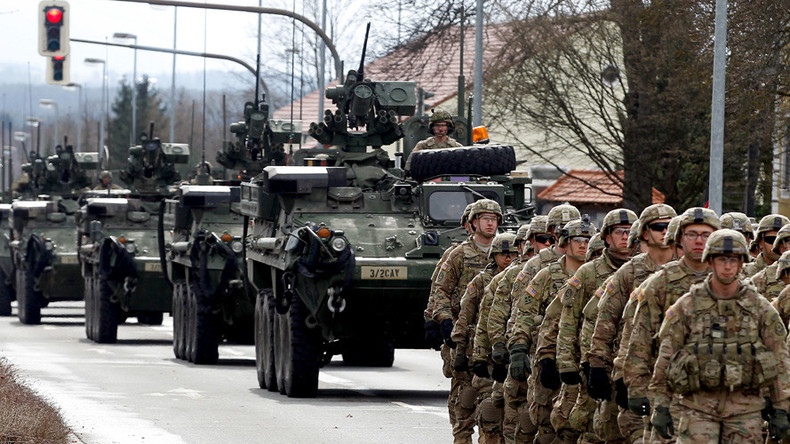
Soldiers of the U.S. Army 3rd squadron, 2nd Cavalry Regiment as the troops of the “Dragoon Ride” military exercise arrive at their home base at Rose Barracks in Vilseck April 1, 2015. © Michael Dalder © Reuters
In Russia’s case, military leaders decided to abandon brigades as the basic block of combined arms formations on the most important strategic directions. This was due to the concern about the increase in NATO forces and their deployment on Russia’s western borders. Thus the Western MD is going back to armies consisting of divisions and regiments rather than brigades, which is more useful in both defense and offense. In addition, Ground Forces are creating large tank-heavy formations. Western MD already has one. In the foreseeable future, one may expect the Central MD to also get a tank army, since the 90th Tank Division is not part of any army. It is also likely Eastern MD formations will retain current structure. Brigades there are the best solution for a country in difficult economic and demographic conditions.
A few words should be said about the military administration of Russia’s territory. There is active discussion of a return to the Soviet military district model, due to the difficulties in command and control when the district HQ is 1000km away from the district boundary. The reinvented military district would also be responsible for all types of forces needed to fulfill its missions. Thus the Western MD may be divided into Leningrad and Moscow MDs, Central MD into Vola-Urals and Siberian MDs. It’s difficult to say how Eastern MD might be divided, and the Southern MD will likely be preserved in its current form, which means splitting higher command echelons (district level) and increasing formation size (from brigades to divisions and regiments).
We may thus draw the conclusion that the main difference in the approach between US and Russian land forces is that, first of all, the Russian Ground Forces are intended to defend the territorial integrity and inviolability of the nation’s own territory, and secondly, to react to the use of force by competitor powers in third countries when it poses a significant threat to Russia’s vital interests.
In the meantime, further US Army development will focus on rapid deployability to any part of the planet, concurrently with the overwhelming expansion of its own potential to defend US or allied interests. It is therefore relatively clear that the United States will continue to develop the doctrine of offensive operations as part of its pursuit of global dominion. The Russian Federation, in turn, will concentrated on defense and reaction to the actions of potential rivals.



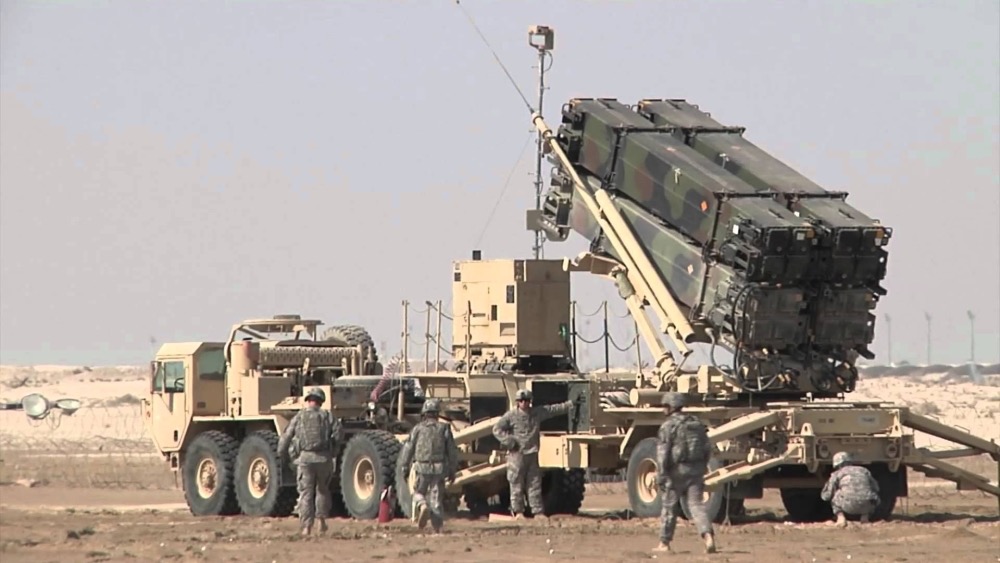

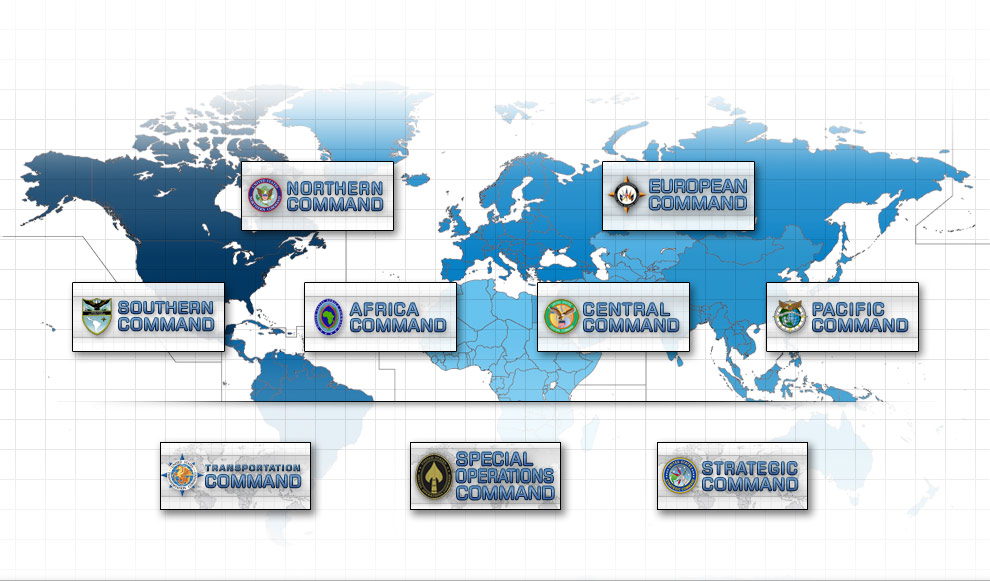
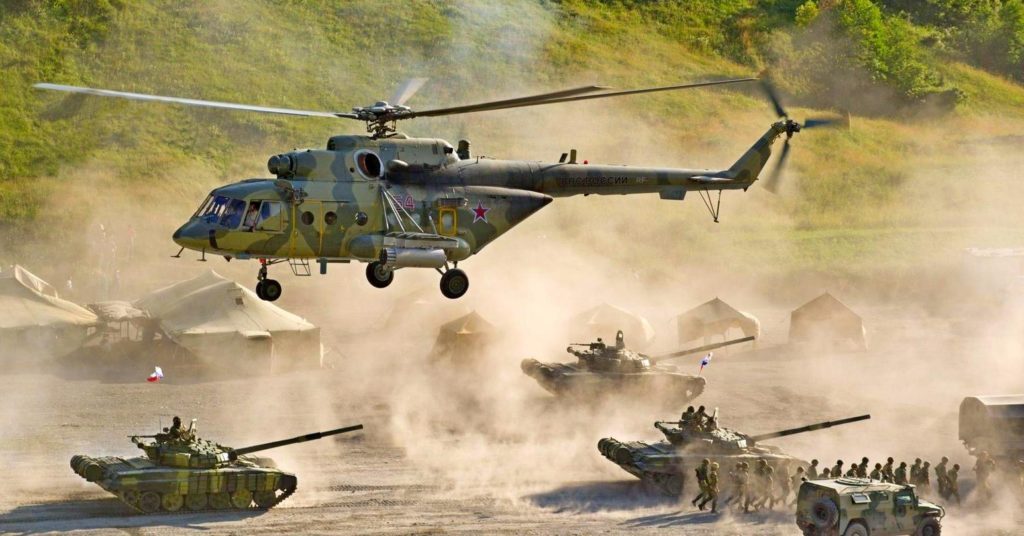
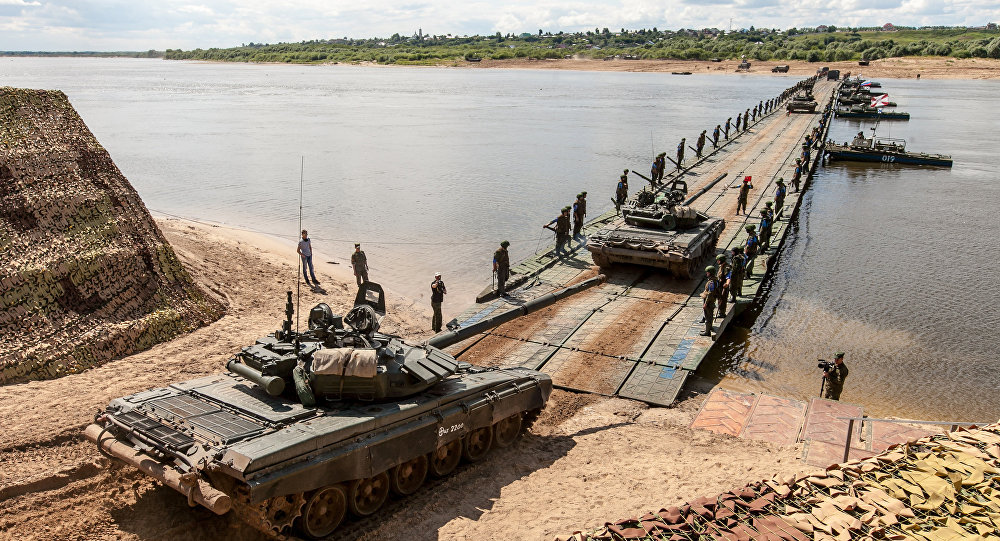
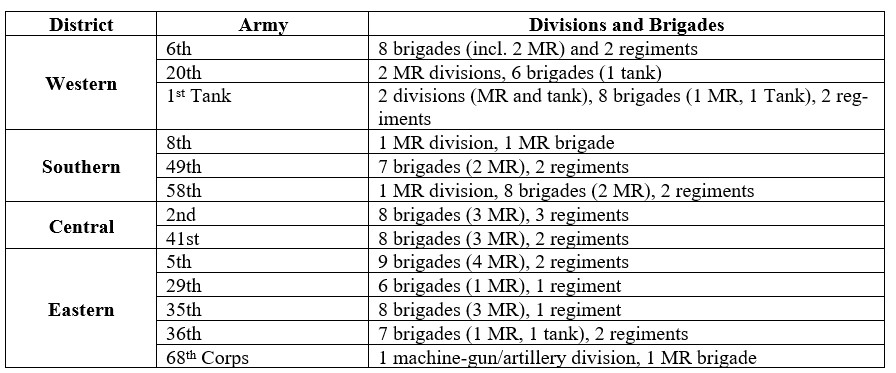



Russia, China, Pakistan, India and Saudi Arabia cannot live independent. They will be kept slaved of America until true talented leaders replaced their leaderships.
Hey peeps, we got a true talented leader here!